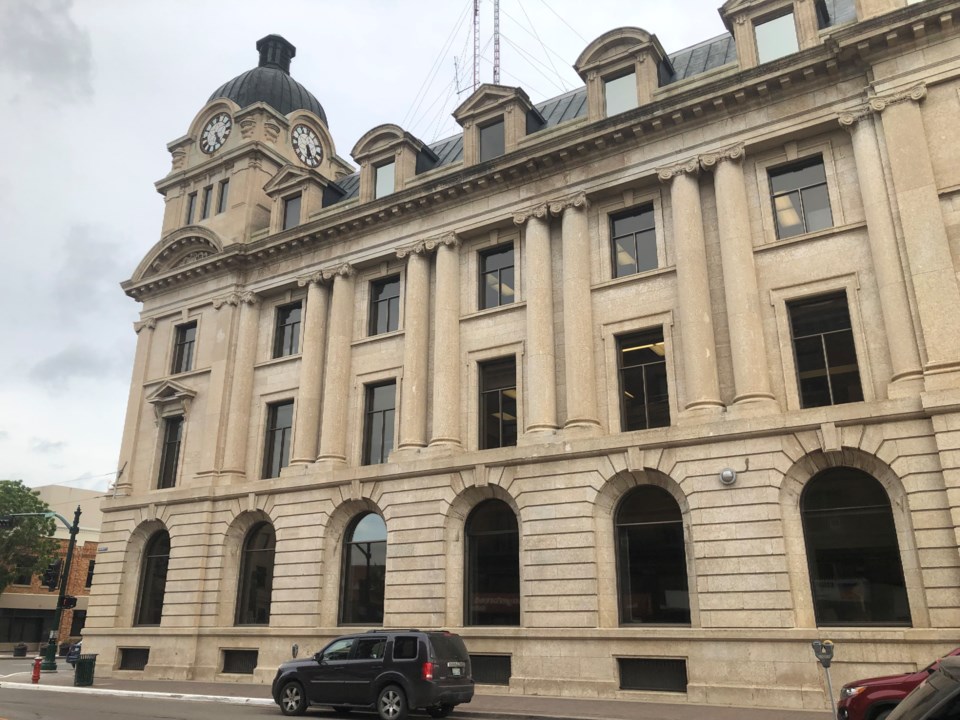For only the second time in five years, Moose Jaw city hall’s administrative review officer (ARO) has received a complaint from a citizen, with this concern focused on the joint-use school project.
Resident Jan Radwanski submitted a request to ARO Saundra Arberry in mid-February asking that she review and allegedly failed to host public consultations before passing them.
Specifically, Radwanski believed city council should have adhered to bylaw 5642, the planning public notice policy bylaw, and hosted public consultations and placed signs in the Westheath subdivision with the amended concept plan for the joint-use school location and all proposed residential and infrastructure upgrades.
Council received and accepted Arberry’s report during its April 22 executive committee meeting.
Arberry noted that Radwanski referenced bylaw 5642 “as the defining piece of legislation at issue” since it establishes a policy that sets out the minimum public notice requirements, the methods of notice the city should follow and the minimum time to give notice with planning-related matters.
“However, this bylaw cannot be read in isolation as there are other City of Moose Jaw bylaws that are relevant to this issue,” she said. “Specifically, bylaw No. 5175, (the) city administrative bylaw … contains relevant sections that affect the question at large.”
It initially appeared that there was “ambiguity” and “conflict” between bylaws 5175 and 5642 since the latter establishes specific instances when public consultation must be undertaken and adds extra notice requirements, Arberry said.
A closer reading, however, suggests the municipality created bylaw 5642 to complement bylaw 5175 since the former lists other matters not included in the latter. Moreover, appendix C in bylaw 5175 lists the matters for which the city must give notice and how to do it.
After an “extensive review of the relevant materials,” Arberry determined that bylaws 5680 and 5681 were subject to the notice requirements in appendix C, and the city did, “as far as I can ascertain,” comply with the required notices for the two bylaws.
Meanwhile, in Arberry’s opinion, appendix C covered rezoning matters or amendments to concept plans and did not refer “in any way” to an Official Community Plan, which was another area of Radwanski’s concerns. Moreover, she believed bylaw 5682 was neither an amending nor repealing bylaw, which meant notice requirements in bylaw 5175 did not apply.
Also, the administrative review officer said bylaw 5682 fell within the scope of schedule A in bylaw 5642.
Appendix C lists four types of notices that city hall shall give during the public engagement process, including neighbour consultations, newspaper notices, public information sessions and placement of large format development signs.
Arberry said the city met the neighbour consultation requirement by mailing more than 500 notices to affected Westheath residents and posting newspaper ads. Furthermore, it offered citizens the chance to provide feedback through its website and social media postings.
Also, all the notices “very clearly state(d)” the time, place and method that residents could use to provide feedback, she continued. Therefore, she was satisfied that these opportunities, paired with previous community engagement pieces, met the alternative form of public consultation.
The placement of a large format sign was the only remaining issue, with Arberry saying the city did not meet this requirement since city administration told council it should be waived due to the property’s location and minimal passing traffic.
Moreover, administration argued the rezoned land fell below the requirements of being two hectares (4.94 acres) in size and having 50 dwellings.
Arberry found that to be “a curious argument” considering administration said public consultations and a large format sign were unnecessary but still recommended formal waiving of the requirement.
It was “even more odd” since bylaw 5682 included a chart stating that the proposed zoning bylaw amendment would rezone Westheath phases 5 and 6 and listed four proposed zones and their sizes, together equalling roughly four hectares (9.88 acres).
While waiving the requirement was “odd,” Arberry noted that the city manager has the power to make that recommendation and council has the authority to act on it.
“While perhaps not technically adhering to all public notice requirements set out in bylaw 5642,” Arberry said she was satisfied that the city took seriously the responsibility and policy requirements for public consultation and did its due diligence to ensure citizens were appropriately and adequately notified about this matter.
The next executive committee meeting is Monday, May 13.




